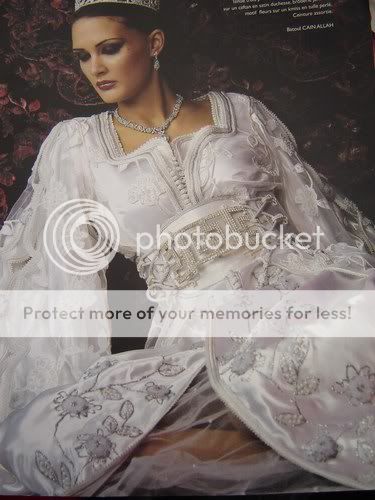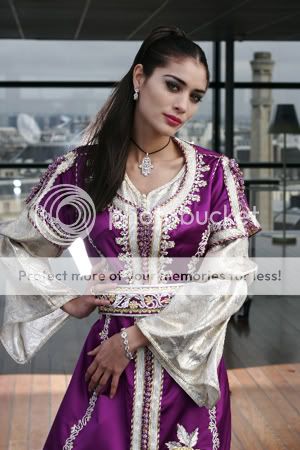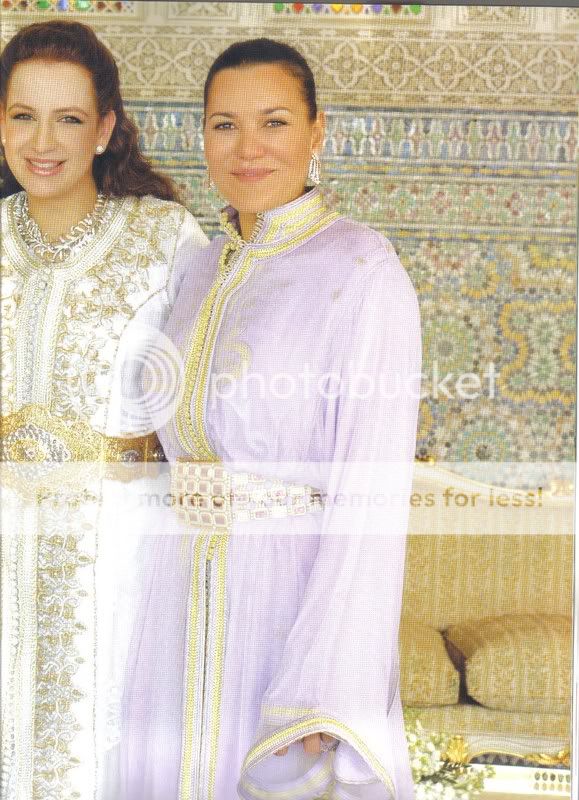1. Moroccan people are proud of having agreat and varied cultural heritage that isthe result of the ethnic variation ofMoroccan society. Traditional Moroccanclothes are an important part of thisheritage. In this article, I will mention sometypes of traditional clothes that are famousin this wonderful country.We have two main types of traditionalclothes:
2. Moroccan clothes are traditionally rich and varied - variety offabrics, shapes and colors expressing a certain art of draping -Moroccan costume for man or woman comes by local culturesof each region or each social group.
3. We have two main types oftraditional clothes:Mens Clothes :On the one hand, we have clothes for men,which are considered as a compulsorycondition to be fulfilled on all Moroccanspecial occasions, such as wedding parties,the Aids, and circumcision parties.We can find many kinds of these clothes:the djellaba, a long, loosely fitting hoodedouter robe with full sleeves, the terbouch ortarbush, a red felt hat in the shape of atruncated cone, and the belgha baboosh orleather sleepers. Also, there is the derraa, theSahrawi traditional male clothes consisting ofa long loose shirt of blue cotton.
4. FRUIT OF MEN’S WEAR
5. BELGHABabouche orsleepersYou want to try it?
6. Women Clothes :On the other hand, we have clothes for women, which areconsidered as essential to their elegance and beauty. There aremany kinds of womens clothes, such as the caftan, a longgarment with wide loose sleeves, fastened in the front with arow of small buttons usually made of silk braid, of Andalusianorigin.The caftan or kaftan has become one of the most famousMoroccan dresses for women, although it used to be special formen, and it has witnessed many changes in order to make itmore modern and more practical.There is also the takchita, which consists of Dfina, in which wecan find many colors, and Thtya, in which we can find onlyone color. There is the djellaba as well, which also haswitnessed many modern touches.In addition to these, we can find some Amazigh clothes, suchas the ahayk, the tabizart, the tatrft or the laktib and, finally, wehave the mlahfa, which is common among Saharan womenand which covers the whole body except face and hands.
7. CHIC AND SPECIAL
8. DO YOU LIKE IT
9. SO WHAT NEXT
10. AM I A PRINCESS ?
11. Chedda is the traditional wedding dress from noth Morocco (Tetouan, Tangiers,Larache, Asilah, Chaouen etc). Its said that this dress was brought to Moroccoby the Andalucian immigrants when they left Andalucia during the 15th century.The chedda is slightly different from a city to another.
12. Morocco is a country rich in history, traditions, people, and culture. Every part of theseaspects influences how Moroccan people are dressed. Among the variety of clothes you willfind in Morocco. The Djellaba and Gandora are the most common of Moroccan clothes.Thesefine garments speak of the luxurious clothing style of the country.WELCOME TOMOROCCO LAND OFDREAMS





























